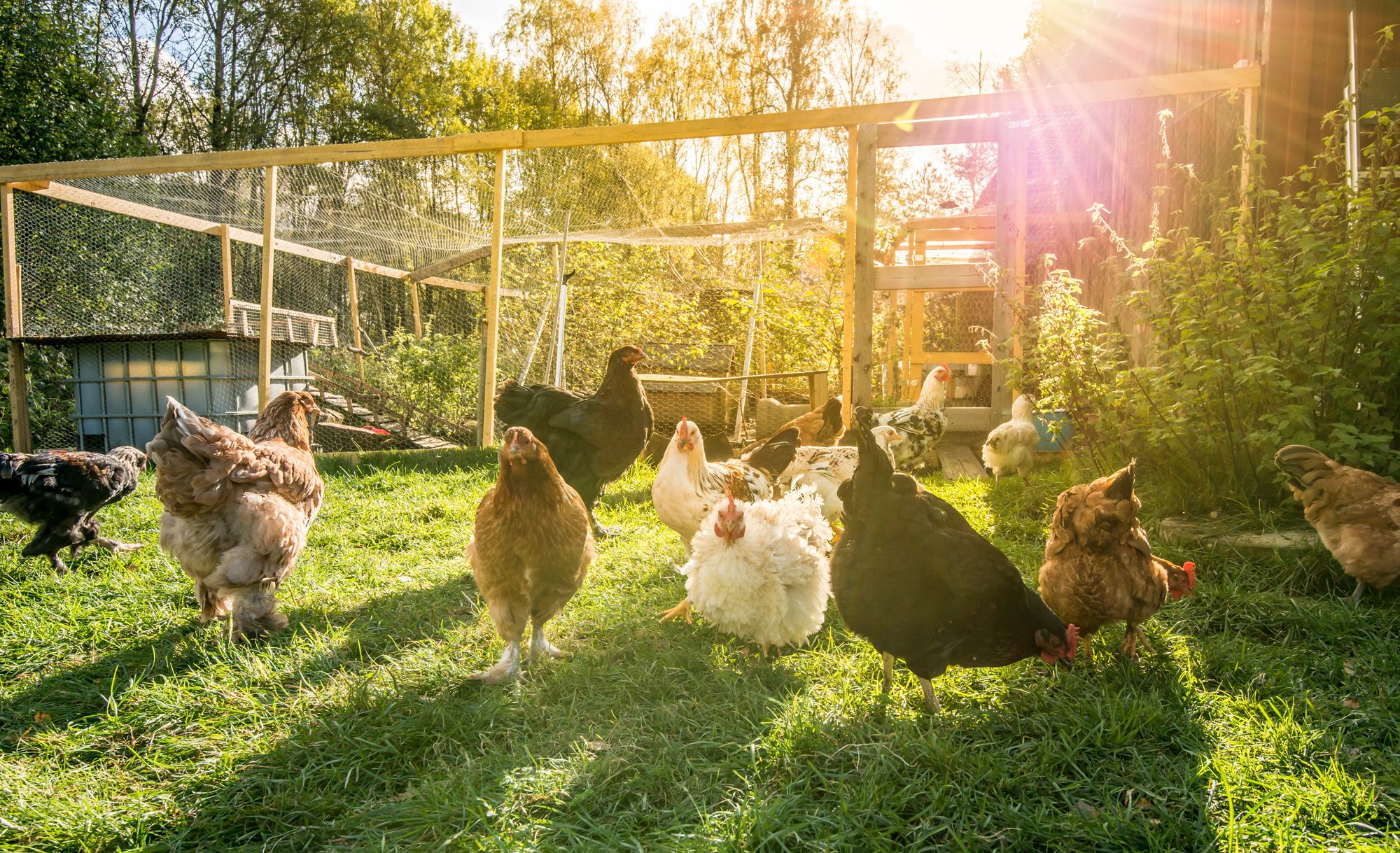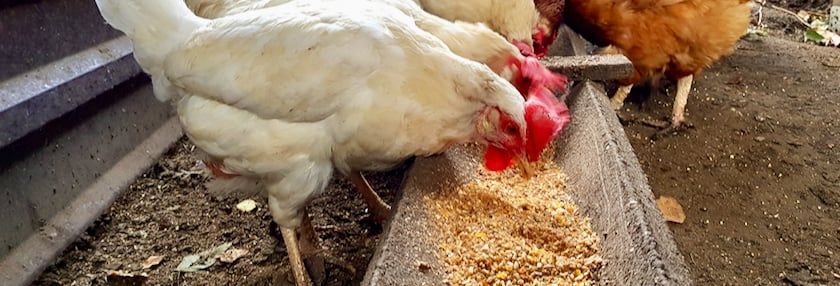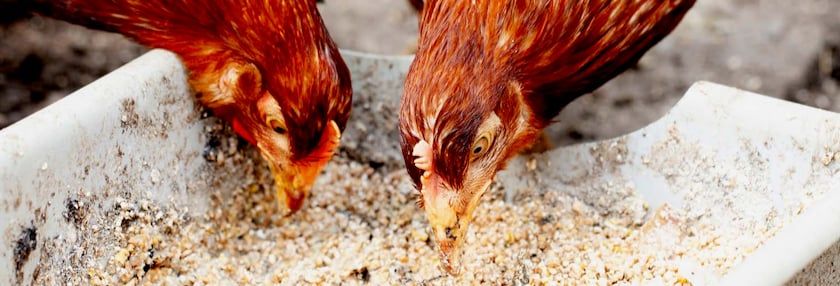Whole Grain Scratch Grains
Choose yours on content, not looks


Written by Curran Gehring, Ph.D
June 15, 2023
Scratch grains are mixtures of whole, cracked, or crimped grains and seeds used as a supplemental feed or treat for chickens. The term "scratch grains" encompasses various product forms, ranging from simple 3-way mixes of corn, oats, and wheat to more complex blends containing numerous grains and premix pellets.
While some scratch grain products include protein concentrate pellets with high levels of vitamins, minerals, and other ingredients to create a "complete" feed, it is important to note that even these products contain a low percentage of pellets and cannot replace a properly balanced diet.

Oooh, I like the green ones! But ...
The market offers a wide array of visually appealing scratch grain products, featuring different sizes, shapes, and vibrant colors such as yellow, red, green, and black.
In a quick test comparing a complete pellet with a multi ingredient scratch grain, it is likely that chickens will initially show a preference for grains.
Hens tend to gravitate towards bright, contrasting colors and larger particle sizes, and one feeding isn't enough time for them to properly assess the nutrient density of the feed. This can present a problem when a hen selectively pecks out certain grains, such as yellow corn or green peas, because it alters the composition of the mix for other hens and subsequent feedings.
The percentage of different ingredients in the mixture can also be problematic for hens trying to consume a complete diet Carlyle Bennett, an expert with Manitoba Agriculture and Resource Development, highlights that while hens can consume up to 70% whole grain when offered a choice, a mixture of whole grain, concentrate pellets, and a large particle calcium source (limestone or oyster shell) should not exceed 50°/o whole grain.
Hens often struggle to locate pellets amidst an abundance of grains. Some peer-reviewed research suggests an even lower recommended limit of 20% to 30% of the grain portion of the diet replaced with whole grains.
However, before drawing the conclusion that this article dismisses whole grains and scratch feeds, it is crucial to consider the positive effects of whole grains that have been demonstrated by reputable poultry
scientists and nutritionists worldwide. To harness the benefits of whole grain feeding, the ratio of grains to pellets needs to be inverted, contrary to the prevalent approach found in most scratch grain products.
Gizzards and gut health
Dr. R. B. Cumming at the University of New England (Australia) advocated for the use of whole wheat to mitigate the risk of coccidiosis by promoting gut health and development, primarily through gizzard development. The gizzard regulates the pace of digestion and influences the degree of reverse peristalsis, controlling the exposure of digesta to proventricular and pancreatic secretions. Therefore, gizzard development influences nutrient digestibility, feed efficiency, and pathogen load.
Heavier gizzards are linked to increased amounts of digesta at a lower (more acidic) pH, resulting in improved energy and nutrient utilization, particularly of starch. In one study, the inclusion of up to 30% whole wheat in the diet increased metabolizable energy, as well as protein and starch digestibility. Another study indicated that 10 to 20°/o whole wheat enhanced metabolizable energy and amino acid digestibility in chicks.
These effects contribute to better feed conversion when whole grains constitute less than 30% of the diet.
By reducing gizzard pH, including 10% to 20% whole grain in the diet provides an additional advantage by decreasing levels of Salmonella
and Clostridium perfringens in the small and large intestines.
Consequently, a well-developed gizzard acts as a crucial barrier organ, preventing the entry of pathogenic bacteria into the downstream digestive tract.
The golden ratios
The issue with scratch grains isn't with the whole grains themselves but with the incorrect ratio employed. Whole grains offer a range of benefits, including enhanced nutrient and energy digestibility, reduced pathogen presence, improved growth, increased egg production, and enhanced feed efficiency.
The problem arises when the ratio of whole grains is imbalanced.
Instead of feeding 70% to 100% whole grain, a more appropriate approach is to incorporate 10% to 20°/o whole grain (20% to 30% of the grain portion of the diet replaced with whole rather than ground grain). This ensures that birds receive all the benefits of whole grains while still consuming a complete and balanced diet.
Unfortunately, consumers currently have limited options available to them. However, one can be hopeful that feed manufacturers will shift their focus away from aesthetics to efficacy as we continue to uncover the advantages of whole grain when used in the correct proportions.
By embracing the benefits of whole grain, in the right ratios, we can optimize poultry nutrition and welfare.

Tags:Feed 4 Thought

Chicken Whisperer is part of the Catalyst Communications Network publication family.











